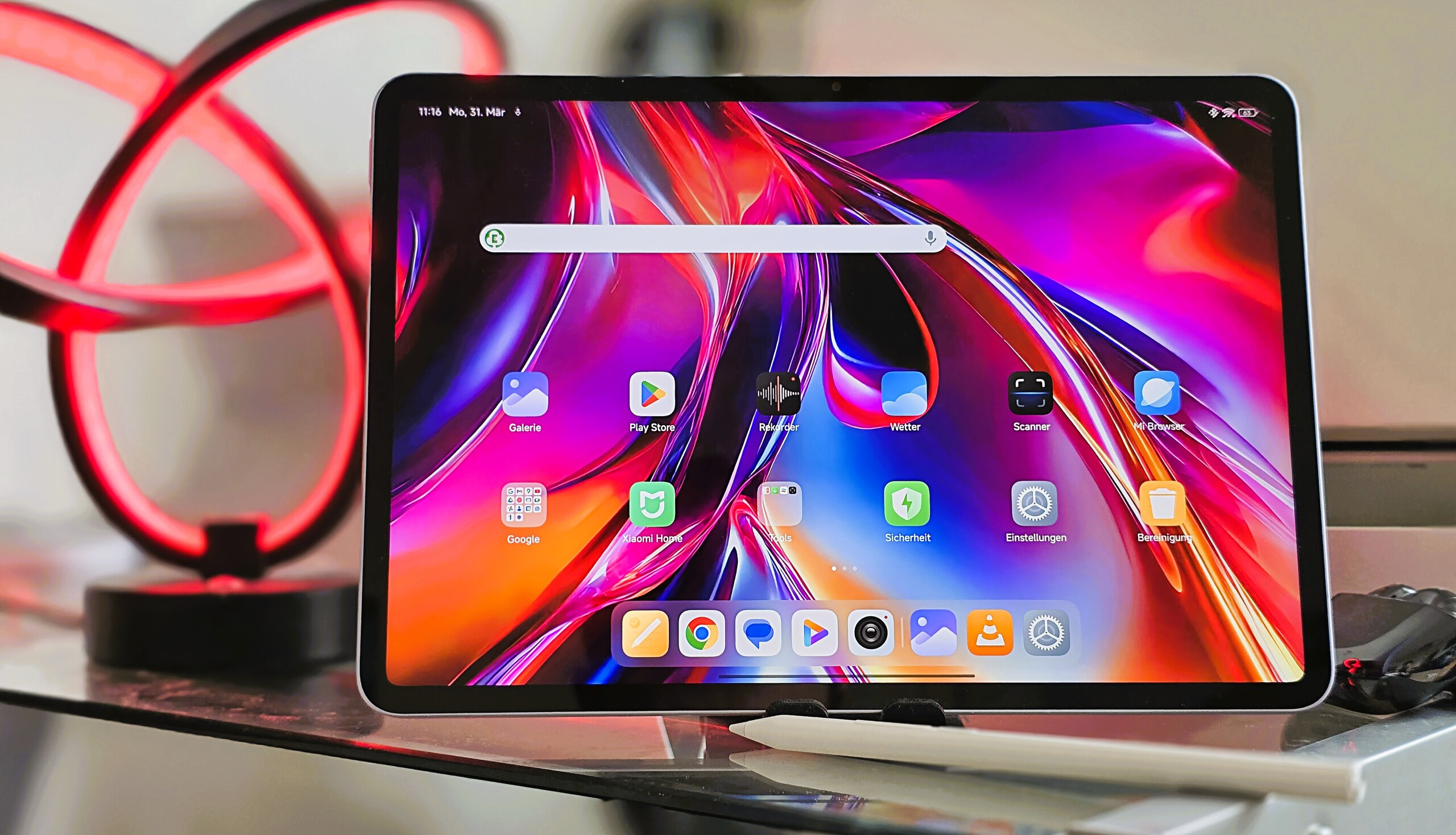
小米 Pad 7 评论:经济实惠的全能平板电脑,超越Apple iPad
最佳性价比
小米 Pad 7 不仅功能强大、价格诱人,而且可选配手写笔和键盘盖,是中小学或大学的全套设备。尤其是其明亮、快速的屏幕,让 iPad 11 或 iPad Air 11 等竞争对手望尘莫及。Marcus Herbrich, 👁 Daniel Schmidt (translated by DeepL / Ninh Duy) Published 🇺🇸 🇩🇪 ...
结论性价比之王,略有不足
与前代产品一样,小米 Pad 7 的出色性价比给人留下了深刻印象。尤其是 144 Hz 屏幕的高亮度,在中端平板电脑中实属罕见,即使是采用部分贴合的 60 Hz 面板的Apple 也明显占优。在电池续航时间方面,Pad 7 也与同类产品存在差距,因为尽管显示屏分辨率和刷新率更高,但它的续航能力却非常强。
在Android 阵营中,很难找到这么多低于 400 欧元的平板电脑。对Pad 7不利而对Pad 7 Pro有利的原因之一是缺少指纹传感器,而这是一项重要的便利和安全功能。
与 Pad 7 Pro(骁龙 8s Gen 3)相比,Pad 7 的高通处理器稍弱,但这在日常使用中并不是问题。即使对于无 PWM 的 2136p 面板而言,Pad 7 的骁龙 7+Gen 3 也足以确保流畅的操作和稳定的游戏。
不过,那些非常重视长期软件支持的用户还是应该考虑三星的 FE 机型,如Galaxy Tab S9 FE 或 Tab S10 FE,因为 Pad 7 在这方面较弱。此外,由于不支持 GNSS 和 5G,小米平板电脑的连接性也受到了限制。尽管如此,Pad 7 提供了笔支持和键盘保护套,可以满足生产性工作的需要。
Pros
Cons
Table of Contents
- 结论性价比之王,略有不足
- 小米 Pad 7:规格
- 机箱:耐用金属外壳,无侵入保护
- 硬件特色配备快速 USB 3.2 接口的小米 Pad 7
- 软件:HyperOS 2.0,提供Android 15
- 通信和全球导航卫星系统:Wi-Fi 6E,但不具备导航功能
- 摄像头:Pad 7 配备 1300 万像素后置摄像头
- 配件和保修:Pad 7 配有可选触控笔和键盘
- 输入设备和操作:机载无指纹传感器
- 显示屏明亮的 144 Hz LCD,无 PWM
- 性能小米采用骁龙 7+ 第三代处理器
- 游戏:小米 Pad 7 实现 120 FPS
- 排放:Pad 7 在负载情况下几乎不会节流
- 电池续航时间:小米 Pad 7 持久耐用
- Notebookcheck 对小米 Pad 7 的总体印象
- Potential competitors in comparison
小米将Pad 7定位为 "全能型 "平板电脑,这在我们使用过程中似乎并不牵强。一方面,这款 6.2 毫米薄的中端平板电脑应该是一款真正的工作利器,这要归功于工作站模式(可在不同窗口同时打开应用程序)以及可选的键盘和笔支持。另一方面 Pad 7 Pro 型号在我们的评测中,Pad 7 Pro 在扬声器、电池和显示屏方面应该没有什么大的区别,至少在纸面上是这样。
幸运的是,入门级版本(8 GB / 128 GB)的建议零售价仅为不到 400 欧元,与前代产品相比保持不变。 不变。对于配备 256 GB 的顶配版 Pad 7 而言,50 欧元的额外收费似乎才算公平。
小米 Pad 7:规格
» Notebookcheck多媒体笔记本电脑Top 10排名
» Notebookcheck游戏笔记本电脑Top 10排名
» Notebookcheck低价办公/商务笔记本电脑Top 10排名
» Notebookcheck高端办公/商务笔记本电脑Top 10排名
» Notebookcheck工作站笔记本电脑Top 10排名
» Notebookcheck亚笔记本电脑Top 10排名
» Notebookcheck超级本产品Top 10排名
» Notebookcheck变形本产品Top 10排名
» Notebookcheck平板电脑Top 10排名
» Notebookcheck智能手机Top 10排名
» Notebookcheck评测过最出色的笔记本电脑屏幕
» Notebookcheck售价500欧元以下笔记本电脑Top 10排名
» Notebookcheck售价300欧元以下笔记本电脑Top 10排名
机箱:耐用金属外壳,无侵入保护
从外观上看,小米 Pad 7 与 Pad 6 相比并无太大变化。 Pad 6.不过,尺寸和重量略有变化,因为制造商调整了显示格式。前代产品仍采用 16:10 显示格式,而 Pad 7 则配备了 3:2 面板。
屏幕与机身正面的尺寸比在这个价位的产品中仍然非常不错。这款中端小米平板电脑的屏占比略低于 86%,看起来比昂贵得多的 iPad Air 11相比,这款中端小米平板电脑的屏占比仅为 86%,而 iPad Air 11 的屏占比仅为 81%。
11.2 英寸显示屏由康宁大猩猩 3 号玻璃保护,不过 Pad 7 将很快推出采用纳米结构表面的版本,以减少户外使用时的反光,与 iPad Pro 13 类似。 iPad Pro 13.
铝制一体成型外壳没有什么可批评的,只是官方称它既不防溅也不防水。表面处理非常出色,磨砂金属表面只是稍稍容易沾染指纹。此外,Pad 7 还能轻松应对扭转。
硬件特色配备快速 USB 3.2 接口的小米 Pad 7
Pad 7 配备了四扬声器系统、红外爆破器、手写笔支持、NFC、Miracast 和 USB OTG,为中端平板电脑提供了全面的功能。此外,与 三星平板电脑一样,工作站模式提供了专为多任务处理而设计的用户界面。借助 HyperConnect 功能,Pad 7 还可以与 HyperOS 智能手机连接,交换数据、使用摄像头或访问最多两个应用程序。
在德国,Pad 7 有两个版本,内部 UFS 存储容量分别为 128 GB 和 256 GB,内存容量为 8 GB LPDDR5x。USB Type-C 端口符合 USB 3.2 标准,这意味着数据可以快速传输。
在测试中,我们使用三星 980 Pro(M2.SSD 硬盘)测得的数据传输速率高达 218 MB/s。连接的外部存储介质可以使用 NTFS 或 exFAT 格式化。在适配器的帮助下,USB 端口还可用作外接显示器的图像信号输出。
软件:HyperOS 2.0,提供Android 15
小米 Pad 7 搭载了最新的 HyperOS 2.01 版本,其中包括众多人工智能工具,如利用文字说明创作图片的 "小米画布",以及支持文字创作和实时转录的 "AI 写作"。通过 HyperAI,还可以使用人工智能助手,它是谷歌 Gemini 的改编版。
目前,Pad 7 还没有被列入小米安全中心,但预计未来会推出两大Android 更新和三年的安全补丁。这个价位的 Galaxy Tab S9 FE但小米在中端市场并不以及时推出更新而闻名。在我们评测期间,小米平板电脑使用的是最新的Android 15 操作系统,包括从 2025 年 2 月开始的安全补丁。
可持续性
Pad 7 的包装似乎不使用塑料,平板电脑本身用一种织物包裹。包装的其余部分由纸板制成。小米没有提供关于所用材料及其回收率的精确细节,但制造商确实提供了关于回收主题的一般信息。
例如,增加了对回收材料的使用,包括铝、金、铜或废弃渔网中的塑料。
通信和全球导航卫星系统:Wi-Fi 6E,但不具备导航功能
小米 Pad 7 没有配备蜂窝调制解调器或 GNSS 模块。安装了两个麦克风,用于视频通话。
快速 Wi-Fi 6E 标准使用 6 GHz 频段进行无线传输,与我们的华硕 ROG Rapture GT-AXE11000 参考路由器配合使用时,峰值传输速率可达近 1,900 MB/s。
高通公司的 FastConnect 6900 在 5 GHz 频道中似乎有些不稳定。
摄像头:Pad 7 配备 1300 万像素后置摄像头
Image Comparison
Choose a scene and navigate within the first image. One click changes the position on touchscreens. One click on the zoomed-in image opens the original in a new window. The first image shows the scaled photograph of the test device.
HauptkameraHauptkameraLow LightZoom 5x在受控照明条件下,我们仔细观察了 1300 万像素光学镜头的色彩保真度。与参考色彩的偏差几乎没有明显的异常值(Delta E>10),大多数色调都能准确捕捉。


配件和保修:Pad 7 配有可选触控笔和键盘
与 Pad 6 不同的是,小米这次省去了电源适配器,因为包装中没有随附充电器。如果需要,可以单独购买一个 45 W 的充电器(零售价:25 欧元)。Pad 7 的配送范围仅包括常见的信息文件和一条 USB 数据线。不过,USB 3.2 Gen 1 功能(图像输出)无法通过附带的数据线实现。
此外,小米还为 Pad 7 提供了售价约 100 欧元的Focus Pen和售价约 130 欧元的键盘盖作为可选配件。如果你直接向制造商订购,键盘盖是免费提供的,而笔的折扣价为 70 欧元。
输入设备和操作:机载无指纹传感器
Pad 7 Pro 的电容式指纹扫描仪 Pad 7 Pro遗憾的是,Pad 7 上没有指纹扫描仪。因此,生物识别解锁只能通过前置摄像头进行人脸识别。在光线条件良好的测试中,2D 人脸识别的反应速度和识别率都令我们信服,但这种方法被认为是相当不安全的。
11.2 英寸液晶面板的采样率高达 360 Hz,可以快速、精确地实现触摸输入。得益于 144 Hz 的高刷新率,HyperOS 界面上的动画也显得非常流畅。没有用于触觉的振动电机。
重 15 克的 Focus Pen 可以区分 8,192 个压力级别,让 Pad 7 的手写笔记变得非常容易。塑料笔握持舒适,手感优质,快速移动时屏幕几乎不会落后于笔尖。制造商称其延迟时间低至 3 毫秒。该笔支持手势控制和 "聚焦 "按钮,除其他功能外,还可用作遥控快门。
手写笔可以收纳在 Focus 键盘中,该键盘在运输过程中提供背光和 0 至 124° 的无级调节显示角度。不过,我们没有拿到键盘盖进行测试。
显示屏明亮的 144 Hz LCD,无 PWM
Pad 7 的 11.2 英寸液晶面板采用 3,200 x 2,136 分辨率,像素密度为 344 PPI,同时提供 44 Hz 至 144 Hz 的 7 级自适应刷新率。这款支持杜比视界(Dolby Vision)的面板还获得了德国莱茵 TÜV 的三重认证,可实现无闪烁显示。我们在测量中也无法检测到 PWM 闪烁。
小米承诺的最大亮度为 800 cd/m²,我们可以在 APL18 测试和纯白背景下确认这一点,这对于一款中端平板电脑来说是一个很高的数值。令人惊讶的是,在我们的 HDR 视频中,亮度却因某种原因降至 565 cd/m²。
| |||||||||||||||||||||||||
Brightness Distribution: 96 %
Center on Battery: 838 cd/m²
Contrast: 952:1 (Black: 0.88 cd/m²)
ΔE Color 1.8 | 0.5-29.43 Ø4.87
ΔE Greyscale 2.5 | 0.5-98 Ø5.1
97.3% sRGB (Calman 2D)
Gamma: 2.25
| Xiaomi Pad 7 LCD, 3200x2136, 11.2" | Xiaomi Pad 7 Pro IPS, 3200x2136, 11.2" | Lenovo Tab K11 Plus IPS, 2000x1200, 11.5" | Xiaomi Redmi Pad Pro IPS, 2560x1600, 12.1" | Apple iPad 10 IPS, 2360x1640, 10.9" | Samsung Galaxy Tab S6 Lite 2024 TFT, 2000x1200, 10.4" | |
|---|---|---|---|---|---|---|
| Screen | 6% | 17% | -25% | -0% | -5% | |
| Brightness middle | 838 | 776 -7% | 473 -44% | 513 -39% | 467 -44% | 486 -42% |
| Brightness | 815 | 750 -8% | 449 -45% | 480 -41% | 468 -43% | 466 -43% |
| Brightness Distribution | 96 | 91 -5% | 87 -9% | 86 -10% | 92 -4% | 92 -4% |
| Black Level * | 0.88 | 0.58 34% | 0.25 72% | 0.4 55% | 0.49 44% | 0.26 70% |
| Contrast | 952 | 1338 41% | 1892 99% | 1283 35% | 953 0% | 1869 96% |
| Colorchecker dE 2000 * | 1.8 | 1.6 11% | 1.56 13% | 2.82 -57% | 1.4 22% | 2.29 -27% |
| Colorchecker dE 2000 max. * | 3.9 | 4.5 -15% | 3.8 3% | 8.83 -126% | 3.3 15% | 6.82 -75% |
| Greyscale dE 2000 * | 2.5 | 2.5 -0% | 1.3 48% | 2.9 -16% | 2.3 8% | 2.8 -12% |
| Gamma | 2.25 98% | 2.23 99% | 2.178 101% | 2.265 97% | 2.21 100% | 2.229 99% |
| CCT | 6912 94% | 6892 94% | 6726 97% | 7189 90% | 6852 95% | 7145 91% |
* ... smaller is better
Screen Flickering / PWM (Pulse-Width Modulation)
| Screen flickering / PWM not detected | |||
In comparison: 53 % of all tested devices do not use PWM to dim the display. If PWM was detected, an average of 8516 (minimum: 5 - maximum: 343500) Hz was measured. | |||
根据提供的规格,中端平板电脑与 专业版在屏幕方面没有区别。不过,Pad 7 的黑度明显较差,这可能表明显示屏供应商与其他产品不同 小米设备.
尽管如此,在日常使用中,黑阶仍能确保约 1:1,000 的平均对比度,在 APL18 测量中,由于黑色更丰富(0.84 cd/m²),对比度略高。不过,与竞争对手相比 照度低得多的竞争产品相比应该考虑到 Pad 7 的高亮度,这往往会导致黑色色调显得不那么深,因为光线没有完全被液晶阻挡。
彩色显示屏的设置选项也很丰富。除了各种色彩配置文件外,还可以调整色温和色彩空间。色彩校准得非常好。个别颜色之间的差异几乎看不出来。
Display Response Times
| ↔ Response Time Black to White | ||
|---|---|---|
| 15.78 ms ... rise ↗ and fall ↘ combined | ↗ 3.774 ms rise | |
| ↘ 12.01 ms fall | ||
| The screen shows good response rates in our tests, but may be too slow for competitive gamers. In comparison, all tested devices range from 0.1 (minimum) to 240 (maximum) ms. » 34 % of all devices are better. This means that the measured response time is better than the average of all tested devices (20.8 ms). | ||
| ↔ Response Time 50% Grey to 80% Grey | ||
| 30.94 ms ... rise ↗ and fall ↘ combined | ↗ 6.732 ms rise | |
| ↘ 24.21 ms fall | ||
| The screen shows slow response rates in our tests and will be unsatisfactory for gamers. In comparison, all tested devices range from 0.165 (minimum) to 636 (maximum) ms. » 38 % of all devices are better. This means that the measured response time is similar to the average of all tested devices (32.5 ms). | ||
性能小米采用骁龙 7+ 第三代处理器
骁龙 7+ Gen 3 骁龙 7+ 第三代的性能低于 骁龙 8s 第 3 代的 Pad 7 Pro.尽管如此,对于中端平板电脑而言,SoC 仍然非常强大。Geekbench 数值显示,单核心和多核心的性能与采用 骁龙 870.
总体而言,Pad 7 的性能出人意料地接近 Pro 机型。
| UL Procyon AI Inference for Android - Overall Score NNAPI | |
| Xiaomi Pad 6 | |
| Xiaomi Pad 7 Pro | |
| Xiaomi Pad 7 | |
| Average Qualcomm Snapdragon 7+ Gen 3 (10851 - 13965, n=2) | |
| Average of class Tablet (2597 - 74821, n=57, last 2 years) | |
| Xiaomi Redmi Pad Pro | |
| Samsung Galaxy Tab S6 Lite 2024 | |
| Lenovo Tab K11 Plus | |
| Geekbench AI | |
| Quantized TensorFlow NNAPI 1.2 | |
| Average of class Tablet (130 - 4532, n=9, last 2 years) | |
| Xiaomi Pad 7 Pro | |
| Xiaomi Pad 7 | |
| Average Qualcomm Snapdragon 7+ Gen 3 (n=1) | |
| Lenovo Tab K11 Plus | |
| Half Precision TensorFlow NNAPI 1.2 | |
| Average of class Tablet (84 - 4545, n=9, last 2 years) | |
| Xiaomi Pad 7 Pro | |
| Xiaomi Pad 7 | |
| Average Qualcomm Snapdragon 7+ Gen 3 (n=1) | |
| Lenovo Tab K11 Plus | |
| Single Precision TensorFlow NNAPI 1.2 | |
| Xiaomi Pad 7 Pro | |
| Average of class Tablet (85 - 1140, n=9, last 2 years) | |
| Xiaomi Pad 7 | |
| Average Qualcomm Snapdragon 7+ Gen 3 (n=1) | |
| Lenovo Tab K11 Plus | |
这一趋势在 GPU 测试中得以延续,我们经常看到 Pad 7 Pro甚至比非 Pro 版本稍弱,这可能是由于 Adreno 732和 Adreno 735GPU 规格相似。
与 iPad 10或 红米 Pad Pro进行比较,可以看出 Pad 7 的 GPU 性能很强。
GFXBench (DX / GLBenchmark) 2.7: T-Rex Onscreen | 1920x1080 T-Rex Offscreen
GFXBench 3.0: on screen Manhattan Onscreen OGL | 1920x1080 1080p Manhattan Offscreen
GFXBench 3.1: on screen Manhattan ES 3.1 Onscreen | 1920x1080 Manhattan ES 3.1 Offscreen
GFXBench: on screen Car Chase Onscreen | 1920x1080 Car Chase Offscreen | on screen Aztec Ruins High Tier Onscreen | 2560x1440 Aztec Ruins High Tier Offscreen | on screen Aztec Ruins Normal Tier Onscreen | 1920x1080 Aztec Ruins Normal Tier Offscreen | 3840x2160 4K Aztec Ruins High Tier Offscreen
| 3DMark / Wild Life Extreme Unlimited | |
| Xiaomi Pad 7 Pro | |
| Xiaomi Pad 7 | |
| Apple iPad 10 | |
| Xiaomi Redmi Pad Pro | |
| Samsung Galaxy Tab S6 Lite 2024 | |
| Lenovo Tab K11 Plus | |
| 3DMark / Wild Life Extreme | |
| Xiaomi Pad 7 Pro | |
| Xiaomi Pad 7 | |
| Apple iPad 10 | |
| Xiaomi Redmi Pad Pro | |
| Samsung Galaxy Tab S6 Lite 2024 | |
| Lenovo Tab K11 Plus | |
| 3DMark / Wild Life Unlimited Score | |
| Xiaomi Pad 7 Pro | |
| Xiaomi Pad 7 | |
| Apple iPad 10 | |
| Xiaomi Redmi Pad Pro | |
| Samsung Galaxy Tab S6 Lite 2024 | |
| Lenovo Tab K11 Plus | |
| 3DMark / Steel Nomad Light Unlimited Score | |
| Xiaomi Pad 7 Pro | |
| Xiaomi Pad 7 | |
| Lenovo Tab K11 Plus | |
| 3DMark / Steel Nomad Light Score | |
| Xiaomi Pad 7 Pro | |
| Xiaomi Pad 7 | |
| Lenovo Tab K11 Plus | |
| GFXBench (DX / GLBenchmark) 2.7 / T-Rex Onscreen | |
| Xiaomi Pad 7 | |
| Xiaomi Pad 7 Pro | |
| Xiaomi Redmi Pad Pro | |
| Apple iPad 10 | |
| Samsung Galaxy Tab S6 Lite 2024 | |
| Lenovo Tab K11 Plus | |
| GFXBench (DX / GLBenchmark) 2.7 / T-Rex Offscreen | |
| Xiaomi Pad 7 | |
| Xiaomi Pad 7 Pro | |
| Apple iPad 10 | |
| Xiaomi Redmi Pad Pro | |
| Samsung Galaxy Tab S6 Lite 2024 | |
| Lenovo Tab K11 Plus | |
| GFXBench 3.0 / Manhattan Onscreen OGL | |
| Xiaomi Pad 7 | |
| Xiaomi Pad 7 Pro | |
| Apple iPad 10 | |
| Samsung Galaxy Tab S6 Lite 2024 | |
| Xiaomi Redmi Pad Pro | |
| Lenovo Tab K11 Plus | |
| GFXBench 3.0 / 1080p Manhattan Offscreen | |
| Xiaomi Pad 7 | |
| Xiaomi Pad 7 Pro | |
| Apple iPad 10 | |
| Xiaomi Redmi Pad Pro | |
| Samsung Galaxy Tab S6 Lite 2024 | |
| Lenovo Tab K11 Plus | |
| GFXBench 3.1 / Manhattan ES 3.1 Onscreen | |
| Xiaomi Pad 7 | |
| Apple iPad 10 | |
| Xiaomi Pad 7 Pro | |
| Samsung Galaxy Tab S6 Lite 2024 | |
| Xiaomi Redmi Pad Pro | |
| Lenovo Tab K11 Plus | |
| GFXBench 3.1 / Manhattan ES 3.1 Offscreen | |
| Xiaomi Pad 7 | |
| Xiaomi Pad 7 Pro | |
| Apple iPad 10 | |
| Xiaomi Redmi Pad Pro | |
| Samsung Galaxy Tab S6 Lite 2024 | |
| Lenovo Tab K11 Plus | |
| GFXBench / Car Chase Onscreen | |
| Apple iPad 10 | |
| Xiaomi Pad 7 | |
| Xiaomi Pad 7 Pro | |
| Samsung Galaxy Tab S6 Lite 2024 | |
| Xiaomi Redmi Pad Pro | |
| Lenovo Tab K11 Plus | |
| GFXBench / Car Chase Offscreen | |
| Xiaomi Pad 7 | |
| Xiaomi Pad 7 Pro | |
| Apple iPad 10 | |
| Xiaomi Redmi Pad Pro | |
| Samsung Galaxy Tab S6 Lite 2024 | |
| Lenovo Tab K11 Plus | |
| GFXBench / Aztec Ruins High Tier Onscreen | |
| Apple iPad 10 | |
| Xiaomi Pad 7 Pro | |
| Xiaomi Pad 7 | |
| Samsung Galaxy Tab S6 Lite 2024 | |
| Xiaomi Redmi Pad Pro | |
| Lenovo Tab K11 Plus | |
| GFXBench / Aztec Ruins High Tier Offscreen | |
| Xiaomi Pad 7 Pro | |
| Xiaomi Pad 7 | |
| Apple iPad 10 | |
| Xiaomi Redmi Pad Pro | |
| Samsung Galaxy Tab S6 Lite 2024 | |
| Lenovo Tab K11 Plus | |
| GFXBench / Aztec Ruins Normal Tier Onscreen | |
| Apple iPad 10 | |
| Xiaomi Pad 7 | |
| Xiaomi Pad 7 Pro | |
| Samsung Galaxy Tab S6 Lite 2024 | |
| Xiaomi Redmi Pad Pro | |
| Lenovo Tab K11 Plus | |
| GFXBench / Aztec Ruins Normal Tier Offscreen | |
| Xiaomi Pad 7 Pro | |
| Xiaomi Pad 7 | |
| Apple iPad 10 | |
| Xiaomi Redmi Pad Pro | |
| Samsung Galaxy Tab S6 Lite 2024 | |
| Lenovo Tab K11 Plus | |
| GFXBench / 4K Aztec Ruins High Tier Offscreen | |
| Xiaomi Pad 7 Pro | |
| Xiaomi Pad 7 | |
| Apple iPad 10 | |
| Xiaomi Redmi Pad Pro | |
| Samsung Galaxy Tab S6 Lite 2024 | |
| Lenovo Tab K11 Plus | |
Pad 7 在浏览器基准测试中表现出色,甚至经常领先于 专业版机型。不过,我们测试的是后者的中文版,没有原生集成谷歌服务,如 Chrome 浏览器。
在日常使用中,浏览器的运行速度也令人印象深刻;网站打开速度很快,滚动浏览也很流畅。
| Jetstream 2 - 2.0 Total Score | |
| Xiaomi Pad 7 Pro (Chrome 132) | |
| Xiaomi Pad 7 (Chrome 135) | |
| Apple iPad 10 (Safari Mobile 16.1) | |
| Average Qualcomm Snapdragon 7+ Gen 3 (119.9 - 187.6, n=2) | |
| Average of class Tablet (19.9 - 393, n=70, last 2 years) | |
| Xiaomi Redmi Pad Pro (Chrome 128) | |
| Samsung Galaxy Tab S6 Lite 2024 (Chrome 124) | |
| Lenovo Tab K11 Plus (Chrome 131.0.6778.260) | |
| Speedometer 2.0 - Result | |
| Apple iPad 10 (Safari Mobile 16.1) | |
| Average of class Tablet (2.59 - 572, n=64, last 2 years) | |
| Xiaomi Pad 7 (Chrome 135) | |
| Average Qualcomm Snapdragon 7+ Gen 3 (107 - 145, n=2) | |
| Samsung Galaxy Tab S6 Lite 2024 (Chrome 124) | |
| Lenovo Tab K11 Plus (Chrome 131.0.6778.260) | |
| Speedometer 3.0 - Score | |
| Xiaomi Pad 7 (Chrome 135) | |
| Average of class Tablet (1.25 - 34.4, n=39, last 2 years) | |
| Average Qualcomm Snapdragon 7+ Gen 3 (11 - 15.9, n=2) | |
| Xiaomi Pad 7 Pro (Chrome 132) | |
| Xiaomi Redmi Pad Pro (Chrome 128) | |
| Samsung Galaxy Tab S6 Lite 2024 (Chrome 124) | |
| Lenovo Tab K11 Plus (Chrome 131.0.6778.260) | |
| WebXPRT 4 - Overall | |
| Xiaomi Pad 7 Pro (Chrome 132) | |
| Xiaomi Pad 7 (Chrome 135) | |
| Apple iPad 10 (Safari Mobile 16.1) | |
| Average Qualcomm Snapdragon 7+ Gen 3 (110 - 151, n=2) | |
| Average of class Tablet (21 - 315, n=69, last 2 years) | |
| Samsung Galaxy Tab S6 Lite 2024 (Chrome 124) | |
| Xiaomi Redmi Pad Pro (Chrome 128) | |
| Lenovo Tab K11 Plus (Chrome 131.0.6778.260) | |
| Octane V2 - Total Score | |
| Xiaomi Pad 7 (Chrome 135) | |
| Xiaomi Pad 7 Pro (Chrome 132) | |
| Average Qualcomm Snapdragon 7+ Gen 3 (55668 - 66744, n=2) | |
| Apple iPad 10 (Safari Mobile 16.1) | |
| Xiaomi Redmi Pad Pro (Chrome 128) | |
| Average of class Tablet (763 - 111219, n=92, last 2 years) | |
| Samsung Galaxy Tab S6 Lite 2024 (Chrome 124) | |
| Lenovo Tab K11 Plus (Chrome 131.0.6778.260) | |
| Mozilla Kraken 1.1 - Total | |
| Average of class Tablet (319 - 34733, n=78, last 2 years) | |
| Lenovo Tab K11 Plus (Chrome 131.0.6778.260) | |
| Samsung Galaxy Tab S6 Lite 2024 (Chrome 124) | |
| Xiaomi Redmi Pad Pro (Chrome 128) | |
| Average Qualcomm Snapdragon 7+ Gen 3 (565 - 1153, n=2) | |
| Xiaomi Pad 7 Pro (Chrome 132) | |
| Xiaomi Pad 7 (Chrome 135) | |
| Apple iPad 10 (Safari Mobile 16.1) | |
* ... smaller is better
得益于快速的 UFS 4.0 标准,小米平板电脑 256 GB 版本的读写速度非常出色。值得注意的是,128 GB 存储容量的版本仅配备了 UFS 3.1,因此性能较差。
| Xiaomi Pad 7 | Xiaomi Pad 7 Pro | Lenovo Tab K11 Plus | Xiaomi Redmi Pad Pro | Samsung Galaxy Tab S6 Lite 2024 | Average 256 GB UFS 4.0 Flash | Average of class Tablet | |
|---|---|---|---|---|---|---|---|
| AndroBench 3-5 | -2% | -51% | -55% | -76% | 4% | -56% | |
| Sequential Read 256KB | 3911.82 | 3849.52 -2% | 1003.25 -74% | 844.9 -78% | 521.67 -87% | 3674 ? -6% | 1193 ? -70% |
| Sequential Write 256KB | 3387.43 | 3283.91 -3% | 876.29 -74% | 705.3 -79% | 80.44 -98% | 2674 ? -21% | 834 ? -75% |
| Random Read 4KB | 311.09 | 302.34 -3% | 244.03 -22% | 215.5 -31% | 167.23 -46% | 387 ? 24% | 200 ? -36% |
| Random Write 4KB | 344.51 | 346.85 1% | 232.16 -33% | 231.4 -33% | 98.68 -71% | 408 ? 18% | 203 ? -41% |
游戏:小米 Pad 7 实现 120 FPS
我们使用GameBench 应用程序测试了小米 Pad 7 的游戏适用性。.虽然 骁龙 7+ 第三代虽然骁龙7+Gen3 是一款中端 SoC,但在 11.2 英寸屏幕上,在最高图形设置下,《源氏冲击》等要求苛刻的游戏也能以 60 帧/秒的速度稳定运行,这已经是Android 上的最好成绩了。
由于小米平板电脑不支持游戏中的 120 帧选项,《PUBG Mobile》的高帧率游戏只能达到 90 帧。在《死亡扳机》等老游戏中,我们测得的平均帧率为 117 fps。
排放:Pad 7 在负载情况下几乎不会节流
温度
Pad 7 在负载情况下不会产生过多热量;即使在温度热点,我们也只测得不到 42 °C的适度升温。这也有利于持续性能,我们用 3DMark Wild Life Stress 测试来检验。
在负载情况下 骁龙 7+ Gen 3在负载情况下仅会出现 1.5% 至 13% 的节流,这使得日常使用中系统性能明显下降的可能性很小。
(±) The maximum temperature on the upper side is 41.7 °C / 107 F, compared to the average of 33.7 °C / 93 F, ranging from 20.7 to 53.2 °C for the class Tablet.
(+) The bottom heats up to a maximum of 39.4 °C / 103 F, compared to the average of 33.2 °C / 92 F
(+) In idle usage, the average temperature for the upper side is 28.8 °C / 84 F, compared to the device average of 30 °C / 86 F.
3DMark Steel Nomad Stress Test
| 3DMark | |
| Wild Life Stress Test Stability | |
| Lenovo Tab K11 Plus | |
| Xiaomi Redmi Pad Pro | |
| Samsung Galaxy Tab S6 Lite 2024 | |
| Xiaomi Pad 7 Pro | |
| Xiaomi Pad 7 | |
| Apple iPad 10 | |
| Wild Life Extreme Stress Test | |
| Xiaomi Redmi Pad Pro | |
| Samsung Galaxy Tab S6 Lite 2024 | |
| Lenovo Tab K11 Plus | |
| Xiaomi Pad 7 Pro | |
| Xiaomi Pad 7 | |
| Apple iPad 10 | |
| Solar Bay Stress Test Stability | |
| Xiaomi Pad 7 Pro | |
| Steel Nomad Light Stress Test Stability | |
| Xiaomi Pad 7 | |
| Xiaomi Pad 7 Pro | |
| Lenovo Tab K11 Plus | |
扬声器
Pad 7 的音质在同价位产品中确实不错。Pad 7 的杜比全景声(Dolby Atmos)认证四扬声器系统提供了迷人的立体声和听觉体验。我们的粉红噪声测量显示,声音中有轻微的低音,这在日常使用中也能感受到。
为了配合无线或有线耳机使用,小米平板电脑提供了一个 USB Type-C 端口和 5.4 版蓝牙。Pad 7 的购买者还有多种编解码器可供选择。
Xiaomi Pad 7 audio analysis
(+) | speakers can play relatively loud (90.4 dB)
Bass 100 - 315 Hz
(-) | nearly no bass - on average 17.9% lower than median
(+) | bass is linear (6.5% delta to prev. frequency)
Mids 400 - 2000 Hz
(±) | higher mids - on average 5.4% higher than median
(+) | mids are linear (5.6% delta to prev. frequency)
Highs 2 - 16 kHz
(+) | balanced highs - only 2.7% away from median
(+) | highs are linear (4.7% delta to prev. frequency)
Overall 100 - 16.000 Hz
(+) | overall sound is linear (13.9% difference to median)
Compared to same class
» 24% of all tested devices in this class were better, 4% similar, 71% worse
» The best had a delta of 7%, average was 21%, worst was 129%
Compared to all devices tested
» 14% of all tested devices were better, 4% similar, 82% worse
» The best had a delta of 4%, average was 24%, worst was 134%
Xiaomi Redmi Pad Pro audio analysis
(+) | speakers can play relatively loud (82 dB)
Bass 100 - 315 Hz
(-) | nearly no bass - on average 19.3% lower than median
(±) | linearity of bass is average (11.4% delta to prev. frequency)
Mids 400 - 2000 Hz
(±) | higher mids - on average 6.7% higher than median
(±) | linearity of mids is average (8% delta to prev. frequency)
Highs 2 - 16 kHz
(+) | balanced highs - only 2.9% away from median
(±) | linearity of highs is average (7% delta to prev. frequency)
Overall 100 - 16.000 Hz
(±) | linearity of overall sound is average (19.8% difference to median)
Compared to same class
» 52% of all tested devices in this class were better, 7% similar, 41% worse
» The best had a delta of 7%, average was 21%, worst was 129%
Compared to all devices tested
» 48% of all tested devices were better, 7% similar, 45% worse
» The best had a delta of 4%, average was 24%, worst was 134%
电池续航时间:小米 Pad 7 持久耐用
能源消耗
| Off / Standby | |
| Idle | |
| Load |
|
Key:
min: | |
| Xiaomi Pad 7 8850 mAh | Xiaomi Pad 7 Pro 8850 mAh | Lenovo Tab K11 Plus 8600 mAh | Xiaomi Redmi Pad Pro 10000 mAh | Apple iPad 10 7606 mAh | Samsung Galaxy Tab S6 Lite 2024 7040 mAh | Average Qualcomm Snapdragon 7+ Gen 3 | Average of class Tablet | |
|---|---|---|---|---|---|---|---|---|
| Power Consumption | -18% | 0% | -55% | -167% | 4% | -0% | -99% | |
| Idle Minimum * | 0.74 | 0.75 -1% | 1.1 -49% | 1.7 -130% | 1.34 -81% | 1.2 -62% | 0.82 ? -11% | 1.761 ? -138% |
| Idle Average * | 1.72 | 1.5 13% | 1.3 24% | 2.2 -28% | 7.78 -352% | 1.4 19% | 1.41 ? 18% | 3.75 ? -118% |
| Idle Maximum * | 1.74 | 1.56 10% | 1.6 8% | 2.9 -67% | 7.89 -353% | 1.8 -3% | 1.62 ? 7% | 4.24 ? -144% |
| Load Average * | 7.26 | 7.92 -9% | 4.4 39% | 5.8 20% | 9.05 -25% | 2.5 66% | 6.98 ? 4% | 9.47 ? -30% |
| Load Maximum * | 8.11 | 16.5 -103% | 9.8 -21% | 13.9 -71% | 9.98 -23% | 8.3 -2% | 9.71 ? -20% | 13.2 ? -63% |
* ... smaller is better
Power consumption: Geekbench (150 cd/m²)
Power consumption: GFXbench (150 cd/m²)
电池寿命
在亮度为 150 cd/m² 的实际电池测试中,Pad 7 的续航能力相当出色,Wi-Fi 下的备份时间超过 18 小时,视频播放时间接近 21 小时。小米 Pad 7 的续航时间比 iPad 10 高出 8 个多小时。 Apple iPad 10.
| Xiaomi Pad 7 8850 mAh | Xiaomi Pad 7 Pro 8850 mAh | Lenovo Tab K11 Plus 8600 mAh | Xiaomi Redmi Pad Pro 10000 mAh | Apple iPad 10 7606 mAh | Samsung Galaxy Tab S6 Lite 2024 7040 mAh | |
|---|---|---|---|---|---|---|
| Battery Runtime | -3% | -26% | -10% | -33% | -4% | |
| Reader / Idle | 2481 | 1517 -39% | 2236 -10% | 1729 -30% | 3057 23% | |
| H.264 | 1249 | 727 -42% | 1052 -16% | 740 -41% | 942 -25% | |
| WiFi v1.3 | 1086 | 1054 -3% | 734 -32% | 924 -15% | 647 -40% | 754 -31% |
| Load | 241 | 260 8% | 245 2% | 191 -21% | 287 19% |
Notebookcheck 对小米 Pad 7 的总体印象
小米 Pad 7 拥有超亮的 144 Hz 显示屏、强大的生产力功能和超长的电池续航时间,有望成为中端手机中的大热门。
Xiaomi Pad 7
- 04/11/2025 v8
Marcus Herbrich
Potential competitors in comparison
Image | Model / Review | Price | Weight | Drive | Display |
|---|---|---|---|---|---|
| Xiaomi Pad 7 Qualcomm Snapdragon 7+ Gen 3 ⎘ Qualcomm Adreno 732 ⎘ 12 GB Memory, 256 GB | Amazon: 1. $519.99 Xiaomi Pad 7 Ai WiFi Version... 2. $309.50 Xiaomi Redmi Pad Pro WiFi Ve... 3. $157.50 Xiaomi Redmi Pad Se 8.7 4G L... List Price: 400€ | 500 g | 256 GB UFS 4.0 Flash | 11.20" 3200x2136 344 PPI LCD | |
| Xiaomi Pad 7 Pro Qualcomm Snapdragon 8s Gen 3 ⎘ Qualcomm Adreno 735 ⎘ 12 GB Memory, 256 GB | Amazon: 1. $519.99 Xiaomi Pad 7 Ai WiFi Version... 2. $309.50 Xiaomi Redmi Pad Pro WiFi Ve... 3. $304.00 Xiaomi Redmi Pad Pro WiFi Ve... List Price: 450€ | 500 g | 256 GB UFS 4.0 Flash | 11.20" 3200x2136 344 PPI IPS | |
| Lenovo Tab K11 Plus Qualcomm Snapdragon 680 4G ⎘ Qualcomm Adreno 610 ⎘ 8 GB Memory, 256 GB UFS 2.1 | Amazon: 1. $199.99 Lenovo Tab K11 TB330XU Table... 2. $9.99 XunyLyee 2 Pack, Screen Prot... 3. $48.89 Lenovo Tab Pen Plus (AP500U/... | 520 g | 256 GB UFS 2.2 Flash | 11.45" 2000x1200 204 PPI IPS | |
| Xiaomi Redmi Pad Pro Qualcomm Snapdragon 7s Gen 2 ⎘ Qualcomm Adreno 710 ⎘ 6 GB Memory, 128 GB UFS 2.1 | Amazon: $304.00 List Price: 380€ | 571 g | 128 GB UFS 2.2 Flash | 12.10" 2560x1600 249 PPI IPS | |
| Apple iPad 10 Apple A14 Bionic ⎘ Apple A14 Bionic GPU ⎘ 4 GB Memory, 64 GB SSD | Amazon: 1. $349.00 Apple iPad (10th Generation)... 2. $327.55 New Apple iPad 11-inch: A16 ... 3. $359.99 Apple iPad (10th Generation)... List Price: 579€ | 477 g | 64 GB SSD | 10.90" 2360x1640 264 PPI IPS | |
| Samsung Galaxy Tab S6 Lite 2024 Samsung Exynos 1280 ⎘ ARM Mali-G68 MP4 ⎘ 4 GB Memory, 64 GB UFS 2.0 | Amazon: $279.99 List Price: 429€ | 467 g | 64 GB UFS 2.0 Flash | 10.40" 2000x1200 224 PPI TFT |
Transparency
The selection of devices to be reviewed is made by our editorial team. The test sample was provided to the author as a loan by the manufacturer or retailer for the purpose of this review. The lender had no influence on this review, nor did the manufacturer receive a copy of this review before publication. There was no obligation to publish this review. We never accept compensation or payment in return for our reviews. As an independent media company, Notebookcheck is not subjected to the authority of manufacturers, retailers or publishers.
This is how Notebookcheck is testing
Every year, Notebookcheck independently reviews hundreds of laptops and smartphones using standardized procedures to ensure that all results are comparable. We have continuously developed our test methods for around 20 years and set industry standards in the process. In our test labs, high-quality measuring equipment is utilized by experienced technicians and editors. These tests involve a multi-stage validation process. Our complex rating system is based on hundreds of well-founded measurements and benchmarks, which maintains objectivity. Further information on our test methods can be found here.



















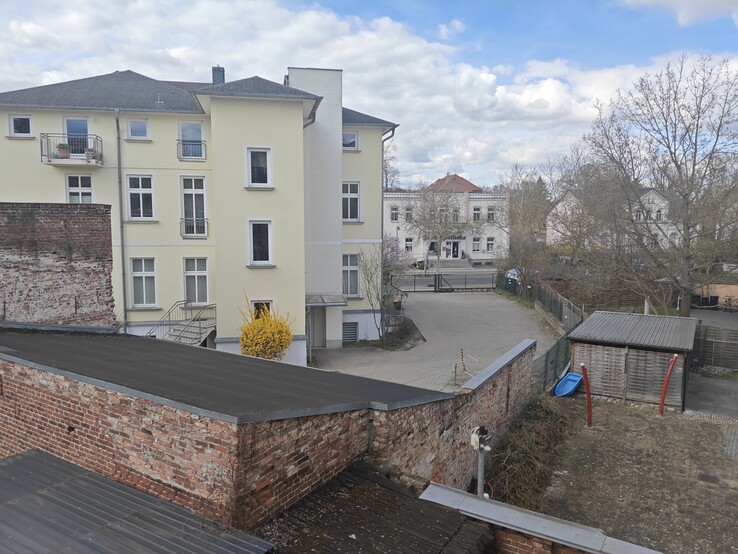



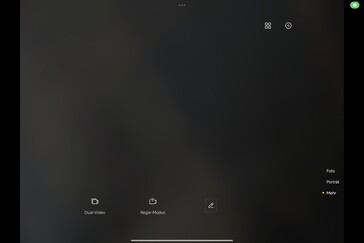


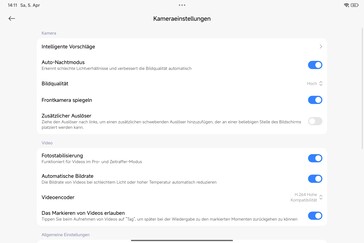






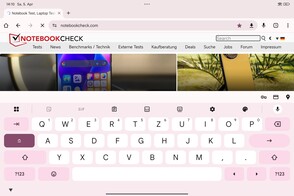
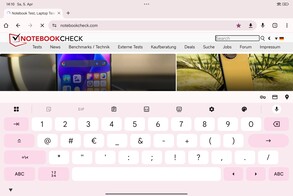

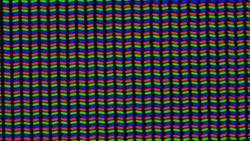




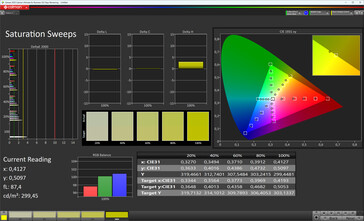
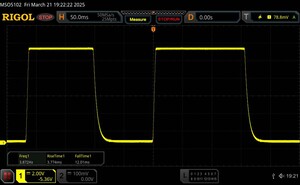
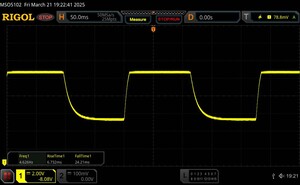
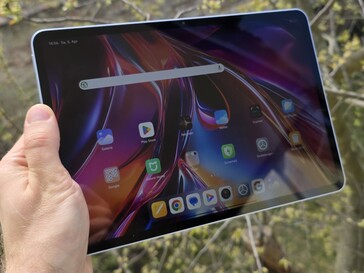
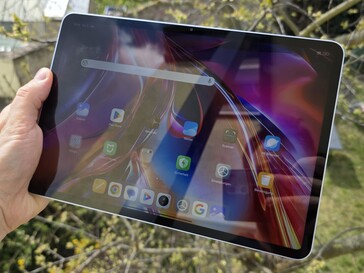
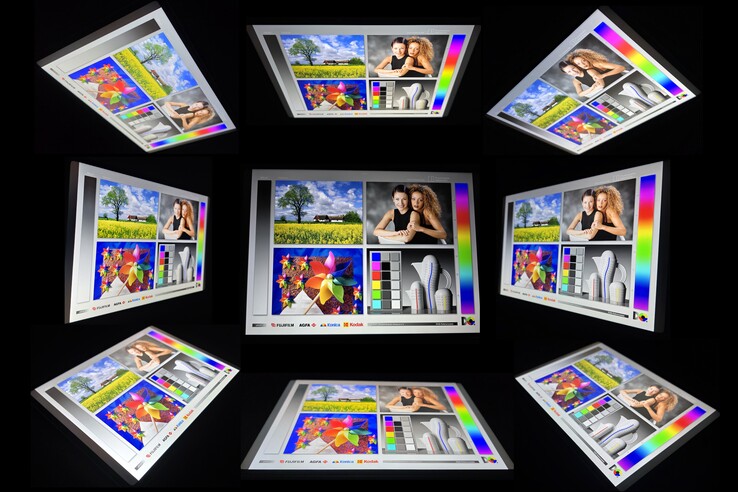
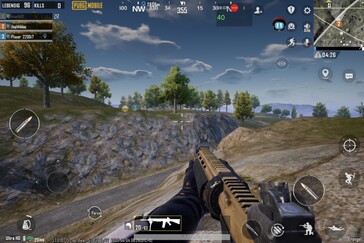

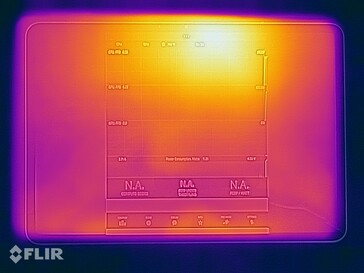
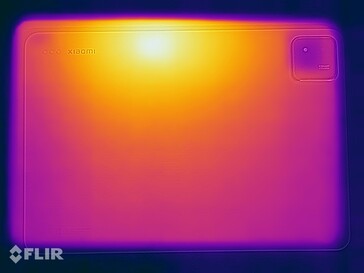
 Total Sustainability Score:
Total Sustainability Score: 













